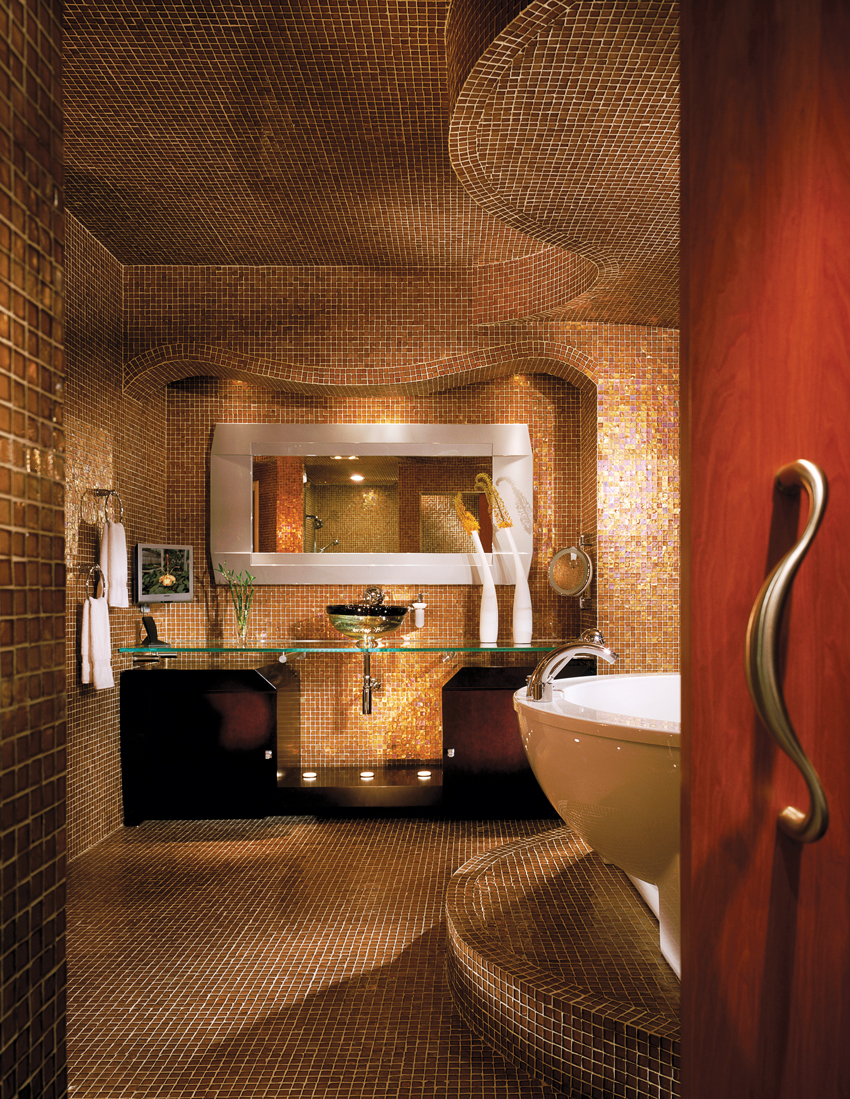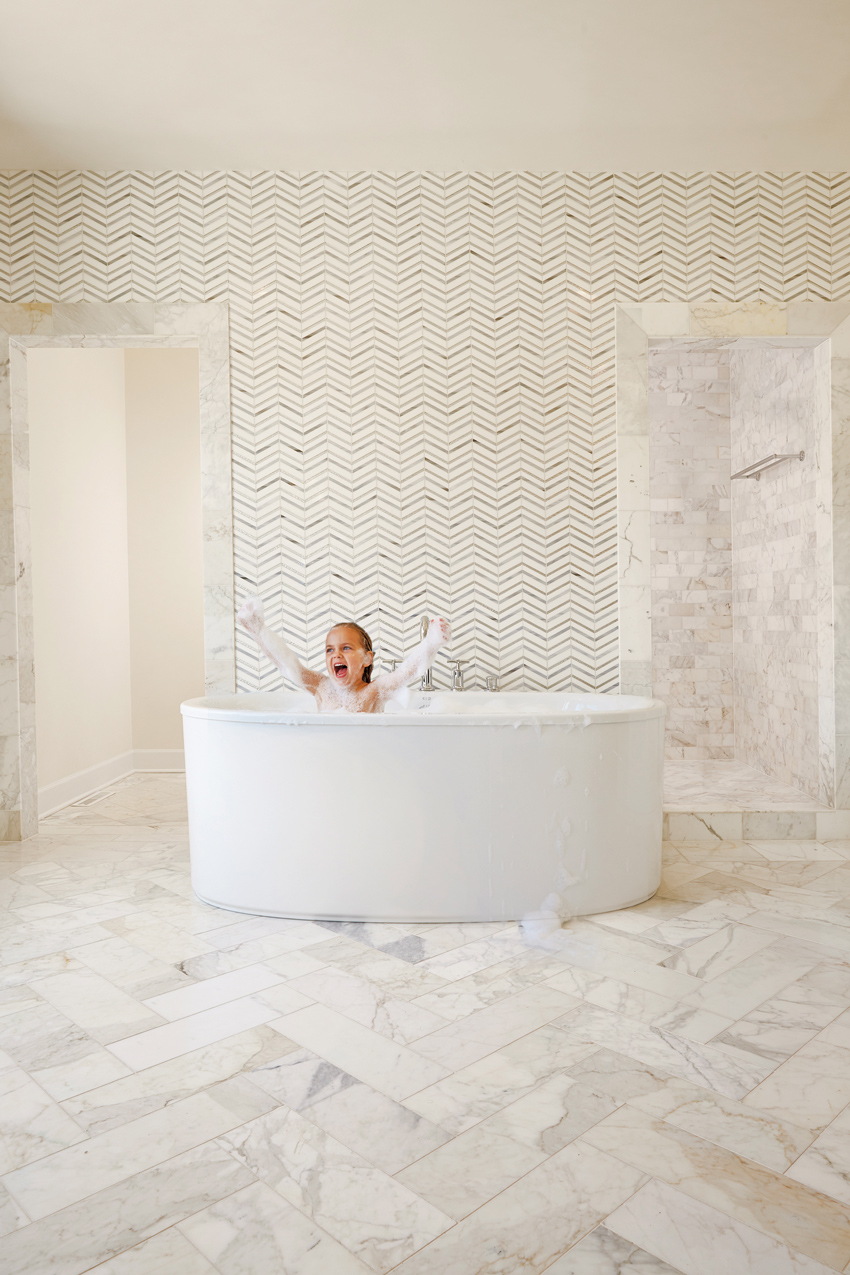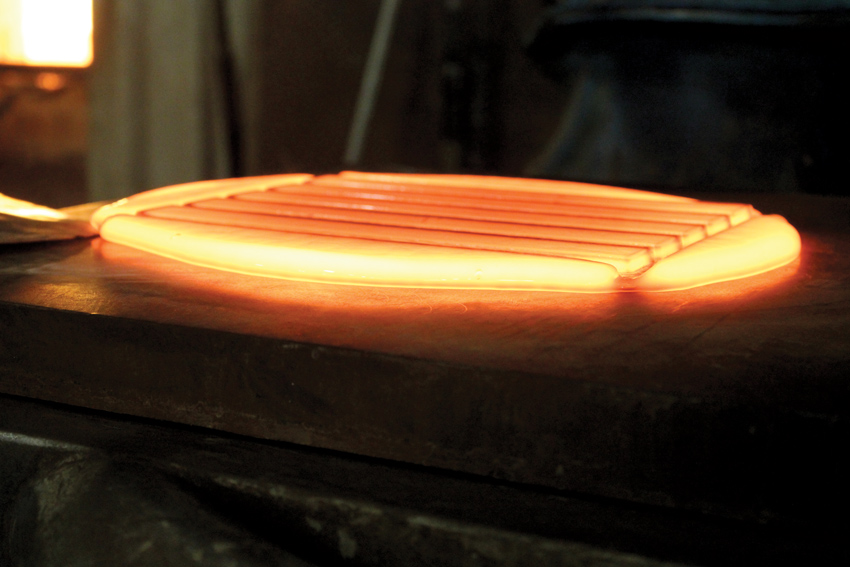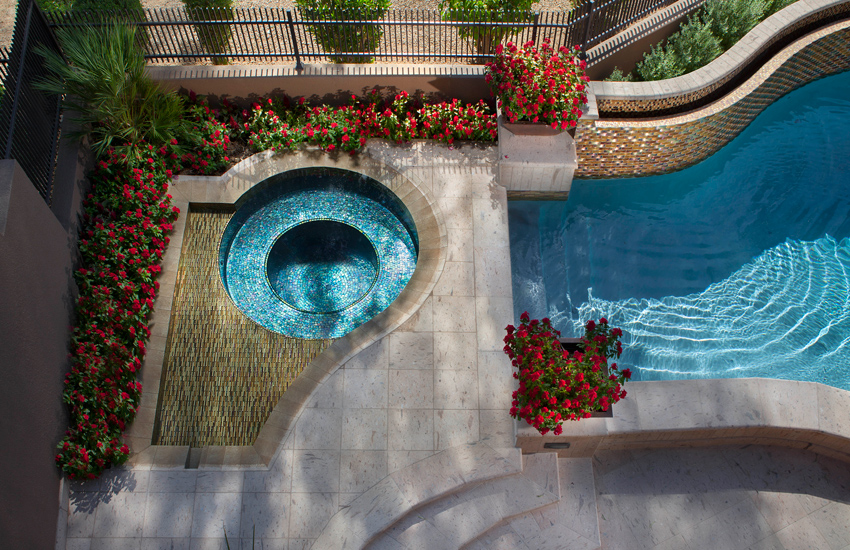Artisanry, Architecture, and North American Glass Tile
Learning Objectives:
- Identify the quality standards in place for glass tile production
- Discuss the various types of glass tile on the market and how to specify them properly.
- Distinguish between the various installation and standards for glass tile.
- Explore sustainability attributes of glass tile, including the use of recycled glass.
- Describe the manufacturing methods for glass tile, glass tile installation standards, and the quality standards in place for glass tile production.
Credits:
A boundless spirit of innovation, a passion for hot glass, and a new vision for the tile industry has marked the recent emergence of handcrafted glass tile manufacturing on the West Coast of the United States. The benefits of this relatively new scene extend to architectural design and interiors as well as specialty applications, such as swimming pools, water features, and sitework. For architects, the challenge today is how to best capitalize on this artisan heritage to create colorful, timeless, and highly durable designs and ensure proper, lasting installations, while also using a recycled and environmentally friendly material: old bottles and waste glass.

Photo courtesy of Oceanside Glasstile/Robert Thien
Mosaic tile is one of the world’s oldest forms of finishes, yet it is sophisticated, highly durable, and sustainable today.
As with any building material, however, issues can arise in working with architectural glass tile, whether mosaic or larger-format tiles. The two most critical are the quality of the manufacturing processes as well as the suitability of application specifications and installation techniques. A wide range in quality separates the producers. In fact, the boom in glass tile products over recent years goes beyond the artisanal makers and West Coast companies. A proliferation of manufacturers worldwide and the emergence of varied production techniques have made the specifier-designer’s task even more complex. “It is very important to select the correct product for the installation application,” says Johnny Marckx, an executive vice president of one North American maker. “The architect’s project team should be familiar with manufacturing and quality standards, tile mounting methods, and other installation techniques. It is also important to review the impact of glass tile on project sustainability.”
Before arriving on the jobsite, glass tile is produced and sourced in a number of ways. Architects experienced in glass tile use typically design with awareness that not all of these products are created equal. Some brand names have invested millions of dollars into quality control standards, product testing, installation technique support, and education. Other companies may make glass tile products in ways that hold up less than adequately in common application environments.
To become reasonably expert in glass tile design and specification, it also helps to know enough about the key ingredients of glass tile, how various products are made, and even some history about glass tile. In addition to reviewing key manufacturing methods, design professionals should be familiar with glass tile testing protocols and installation standards. These provide guidance and help ensure successful buildings, landscapes, and interiors made with glass tile. The three key groups to reference are the American National Standards Institute (ANSI), ASTM International, and the Tile Council of North America (TCNA), which publishes its widely referenced TCNA Handbook for Ceramic, Glass, and Stone Tile Installation.

Photo courtesy of Oceanside Glasstile/Jeff Glasener
Properly specified and manufactured glass tile surfaces are resilient and durable, offering a sustainable luxury finish using recycled bottle glass.
History and Invention
The attraction of glass tile seems self-evident to many. “The colorful, intricate patterns of mosaic and the luster of large glass surfaces offer an authentic, gratifying experience that serves human values, positive vibrations, and cultural vision,” says Marckx, an expert in the industry. Glass tile surfaces are resilient and durable, offering a lasting protective finish with a good return on investment (ROI). For the green-minded owner or designer, creating a luxury finish using recycled bottle glass is an impressive double win.
It’s also a longtime favorite. Glass tile is one of the oldest mediums for creating color in murals, according to William Ellis in his authoritative book, Glass.11
Although it is perceived as relatively new and part of the modern architectural lexicon, glass tile has been used in murals dating back to 2500 BCE, around the same time the Giza pyramid complex arose in what is now El Giza, Egypt. Mosaics with glass tile first appeared in the Hellenistic period, adding unlimited color possibilities, according to Frederick O. Waage: “With the development of wall mosaic, glass largely took over the functions of stone, producing tints of unsurpassed intensity and leading to a continuing search for new coloristic effects.”2
Then and through the modern era, glass tile is generally composed of three primary ingredients: silica sand, fluxes, and metallic oxides, according to the Corning Museum of Glass. Silica, a perpetual resource and the major ingredient in glass, forms a transparent, brittle substance when properly heated and mixed with other components. (Lightning strikes have been known to fuse blobs of impure glass from beach sands.) Added to the process are fluxes—including alkalis, such as sodium carbonate (soda) and potassium carbonate (potash)—to lower the melting temperature and help keep heating consistent throughout the process. Fluxes also help release impurities in the process. Last, manufacturers introduce metallic oxides to create color in a through-body glass tile. Different metals fire off of each other at different temperatures, which creates a byproduct of color.3
As with any liquefied product, the resulting molten glass material can then be molded and formed. It can be paired with natural stone and porcelain, among other materials, as it was in the earliest mosaic applications. Using various techniques, finish types can be applied today, such as non-iridescent, iridescent, and matte finishes. Three broad categories of glass tile manufacture create the range of products available for architectural and landscape uses: cold, warm, and hot.
Cold
The first manufacturing method, cold refers to low-temperature glass, which employs a sheet glass (not unlike common float glass window panels) with coatings added onto the back of the tile at temperatures lower than about 1,000 degrees Fahrenheit. The resulting sheets of backpainted windowpane glass are then cut and finished as needed. One benefit of this production method is that it allows for a broad range of colors, including Pantone Matching System (PMS) colors. However, while many colors are achievable, the cold glass tiles have limited applications. They are generally only suitable for indoor walls because the paints and coatings are not fully bonded to the glass material. For outdoor and other wet applications, the low-temperature applied paint can delaminate and chip under typical atmospheric conditions. In addition, the cold products are often mounted with a mesh, which may be visible in certain installations or when craftsmanship is poor.
Warm
The other general type of glass tile is warm. This refers to several types of manufacturing methods, and each can produce a range of unique visual and tactile effects, all produced at a range of temperatures from about 1,023 degrees Fahrenheit to 1,599 degrees Fahrenheit.
Fused
Named for the fusing of color onto float glass and the fusing together of glass panels, this method involves cutting glass into sections and shapes, followed by firing in a furnace. Color is generally added on top of or under the glass, yielding translucent tiles displaying a layer of color. The pieces are often etched or coated to add further visual interest or to improve performance, such as abrasion resistance. From large format to 1-inch mosaic, fused production offers flexibility in terms of tile size.
Smalti
An ancient glass tile technique combining silica sand with pigments for colorants under high temperatures, smalti tile is associated with classic tile mosaic artwork, including murals. From the Italian word literally translated as “enamels” but referring to a glaze or glass paste, smalti tiles offer a wide range of colors and textured surfaces in typically small formats. Typically made with soda and potash along with metals and metal oxides for color, the mixtures are fired and rolled into slabs to be cut by hand. The slabs can be several inches thick, if desired.
Slumped
In a third warm process, slumping, artisans use heated glass and intentionally slow its cooling process to allow for the bending and curving of the pieces. The bending of the glass tile is often used to create trim pieces, sometimes with an appealing rolled edge. Glass tile manufacturers often offer various trim pieces made by slumping so designers can specify borders and other finishing details.
Hot
This process involves molten glass that is hand cast at about 1,600 degrees Fahrenheit and hand-sheeted and hand-cut. Unseen chemical reactions produce a wide array of colors and effects, which can be rigorously monitored for uniformity. Automated rolling and bending machinery may be used. Hand-casting approaches are widely appreciated by artists and architects alike, as they allow consistent tile shaping, high aesthetic quality, as well as the creation of matching trim pieces. Manufacturers note that cast glass is generally harder to produce than other types of glass tile. Consistency and vibrancy of the through-body coloring demands accurate formulation controls, and the heating and cooling during all processes must be continuously monitored. Yet, when made properly, these glass tiles are among the most resilient. The cast products tend to be very durable, and some manufacturers recommend the tiles for higher-impact uses, such as light commercial flooring, as well as specialty environments, including outdoor and submerged water installations, such as swimming pools and water features.
Other types of glass tile include sintered tile, produced with glass powders pressed into dies and heated. Color is added early or after cooling. The technique produces a uniform look and strong finish as compared to smalti tiles, which are known for their variegated surfaces. Last, many producers offer cast tiles, which are molded from glass pieces yielding a layering or multihued product. Two other techniques are available: terrazzo glass, with its mix of glass and cements, as well as etched tile. Etched tiles typically have a translucent surface added for treatment by abrasion or acid-etching to achieve a given visual effect.
The comparison between hot and cold processes also extends to iridescent finishes. The hot process for iridescent tiles fuses the iridescence into the tile itself, rendering a more durable finish. The hot iridescent glass tiles have higher test values for scratch resistance and slip resistance, as well as unique visual characteristics. Iridescent surfaces in cold-process tiles may be easily scratched off, and the tiles may appear to have an oily finish or film.

Photo courtesy of Oceanside Glasstile/Nick Nacca
Hot or cast glass tile manufacturing requires fully melting the glass. The color is obtained through a chemical reaction at temperatures exceeding 1,600 degrees Fahrenheit.

Photo courtesy of Oceanside Glasstile/Michael Woodall










